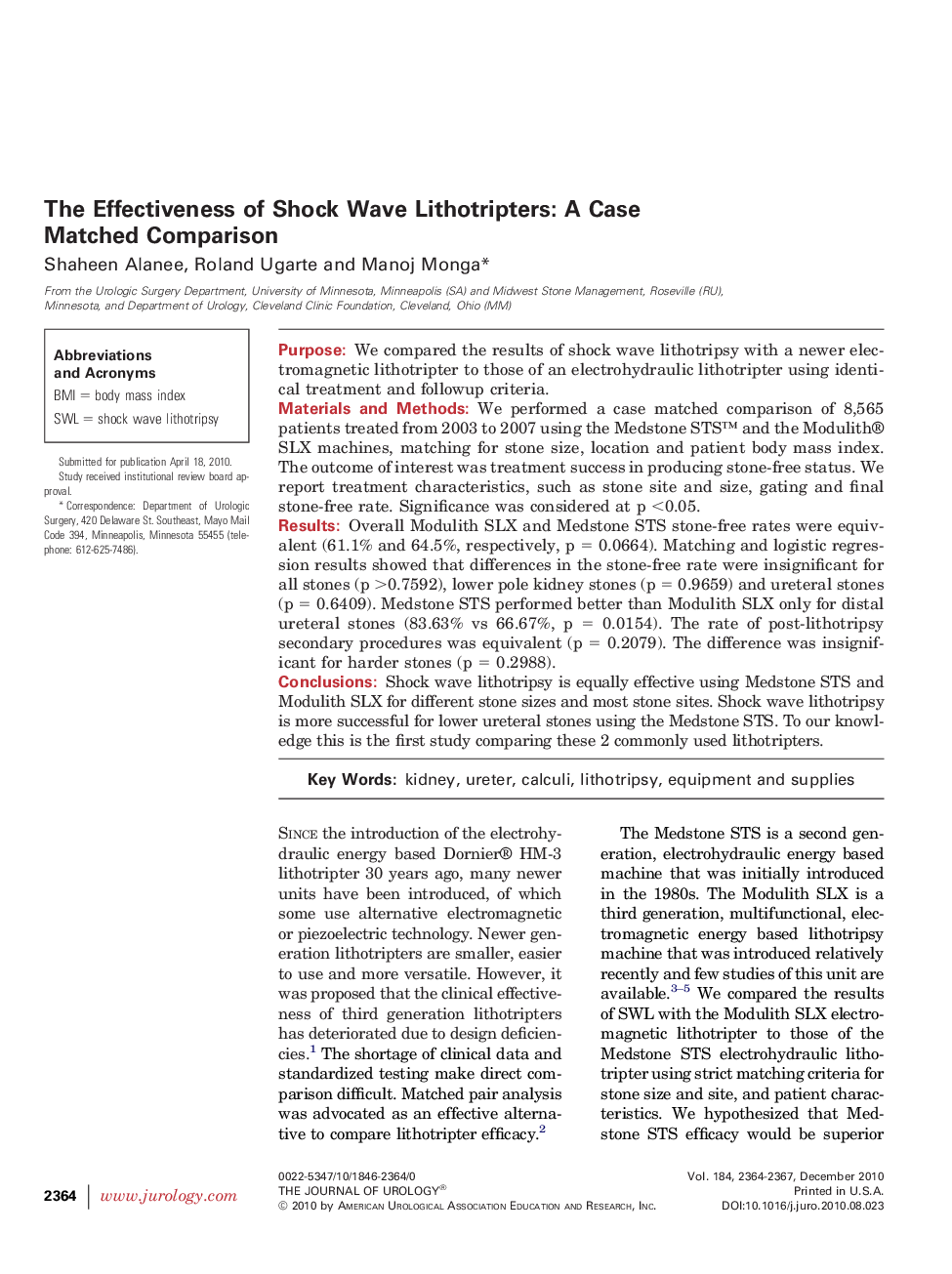| Article ID | Journal | Published Year | Pages | File Type |
|---|---|---|---|---|
| 3872954 | The Journal of Urology | 2010 | 4 Pages |
PurposeWe compared the results of shock wave lithotripsy with a newer electromagnetic lithotripter to those of an electrohydraulic lithotripter using identical treatment and followup criteria.Materials and MethodsWe performed a case matched comparison of 8,565 patients treated from 2003 to 2007 using the Medstone STS™ and the Modulith® SLX machines, matching for stone size, location and patient body mass index. The outcome of interest was treatment success in producing stone-free status. We report treatment characteristics, such as stone site and size, gating and final stone-free rate. Significance was considered at p <0.05.ResultsOverall Modulith SLX and Medstone STS stone-free rates were equivalent (61.1% and 64.5%, respectively, p = 0.0664). Matching and logistic regression results showed that differences in the stone-free rate were insignificant for all stones (p >0.7592), lower pole kidney stones (p = 0.9659) and ureteral stones (p = 0.6409). Medstone STS performed better than Modulith SLX only for distal ureteral stones (83.63% vs 66.67%, p = 0.0154). The rate of post-lithotripsy secondary procedures was equivalent (p = 0.2079). The difference was insignificant for harder stones (p = 0.2988).ConclusionsShock wave lithotripsy is equally effective using Medstone STS and Modulith SLX for different stone sizes and most stone sites. Shock wave lithotripsy is more successful for lower ureteral stones using the Medstone STS. To our knowledge this is the first study comparing these 2 commonly used lithotripters.
